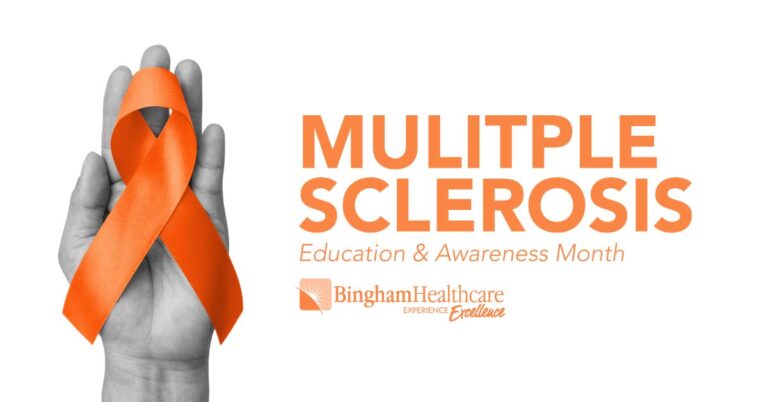
10 Easy Ways to Eat More Fruits & Vegatables
Eating the right amount of fruits and vegetables every day is one of those things we know we should do, but for some reason it can be oh-so difficult, especially if you have a busy schedule.
Since March is National Nutrition Month, it’s the perfect time to look at simple and creative ways to incorporate more fruits and vegetables into your diet, how much you really need on a daily basis, and the associated health benefits.
WHEN LIFE HANDS YOU FRUIT
- Make a breakfast smoothie with low-fat milk, frozen strawberries and a banana.
- Place colorful apples, bananas, oranges, or peaches where they can be grabbed for a snack-on-the-run. Keep a bowl of fresh fruit in the center of the kitchen or dining room table.
- Make a habit of adding blueberries, strawberries, raspberries, blackberries or huckleberries to your morning oatmeal, ready-to-eat cereal, yogurt or toaster waffle.
- Grill fruit: Make kabobs with pineapple, peaches and bananas. Grill on low heat until fruit is hot and slightly golden.
- Make fruit your dessert: Slice a banana lengthwise and top with a scoop of low-fat frozen yogurt. Sprinkle with a tablespoon of chopped nuts.
WHEN LIFE HANDS YOU VEGETABLES
- Top pizzas with broccoli, spinach, green peppers, tomatoes, mushrooms or zucchini.
- Add grated, shredded or chopped vegetables such as zucchini, spinach and carrots to lasagna, meat loaf, mashed potatoes, pasta sauces or rice dishes.
- Turn any omelet into a hearty meal with broccoli, squash, carrots, peppers, tomatoes or onions with low-fat sharp cheddar cheese.
- Keep cut vegetables handy for mid-afternoon snacks, side dishes, lunch box additions or a quick nibble while waiting for dinner. Ready-to-eat favorites include: red, green or yellow peppers, broccoli or cauliflower florets, carrots, celery sticks, or cucumbers. Use low-fat salad dressing for dipping, or liven up celery with a little peanut butter and raisins to create “ants on a log.”
- Stock your freezer with frozen vegetables to steam or stir-fry for a quick side dish, or add a little color to spinach salads with baby carrots, grape tomatoes, mandarin oranges, or strawberries.
At one time or another, you’ve probably given a friend the advice, “Don’t try to change everything at once—do a little at a time.” The same holds true with trying to incorporate more fruits and vegetables into your diet. Start out easy and eventually you can get more creative.
HOW MUCH?
On average, an adult should try to eat at least 2 cups of fruit and 2 ½ cups of vegetables on a daily basis. One cup of fruit can equal a small apple, a cup of applesauce, one banana, a medium-sized grapefruit, or eight strawberries. One cup or 8 ounces of fruit can also be a cup of 100 percent fruit juice or ½ cup of dried fruit. One cup of raw or cooked vegetables or vegetable juice, or 2 cups of raw leafy greens can be considered as 1 cup from the vegetable group.
Remember: fruits and vegetables are convenient and nutritious in any form—fresh, frozen, canned, and dried.
WHY EATING FRUITS AND VEGETABLES MATTERS
No matter your age, health or fitness level, the quality of the food you eat can make a big difference in how you feel and function. Eating fruits and vegetables will provide you with important vitamins, minerals and fiber that help to:
- Decrease recovery times from strenuous exercise.
- Improve cognitive function—literally feed the brain.
- Keep the digestive system happy.
- Maintain a healthy blood pressure and prevent chronic diseases.
- Maintain healthy bones and teeth, eyes and skin.
- Make it easier to maintain appropriate body weight and composition.
- Prevent premature aging.
- Protect against infection.
- Provide energy reserves needed during times of stress, illness and intense activity.
“Compared with people who consume a diet with only small amounts of fruits and vegetables, those who eat more generous amounts as part of a healthful diet are likely to have reduced risk of chronic diseases, including stroke and perhaps other cardiovascular diseases and certain cancers,” according to the Centers for Disease Control and Prevention.
EM-POW-ER Weight Loss Program
If you’ve been on a weight-loss journey for a while and are unhappy with your progress, Bingham Healthcare’s EM-POW-ER Weight Loss program might be right for you. There are several new components to the program, including nutrition education. People in the program meet with a specialized dietitian to review food choices and learn how to incorporate those choices into a healthy living style.
For more information, please call (208) 782-3993, or sign up for a free seminar at www.IdahoEmpower.com. Seminars are held throughout East Idaho every month.
Our content is reviewed regularly and is updated when new and relevant evidence is made available. This information is neither intended nor implied to be a substitute for professional medical advice. Always seek the advice of your physician or other qualified health provider prior to starting any new treatment or with questions regarding a medical condition.
Return to Articles


